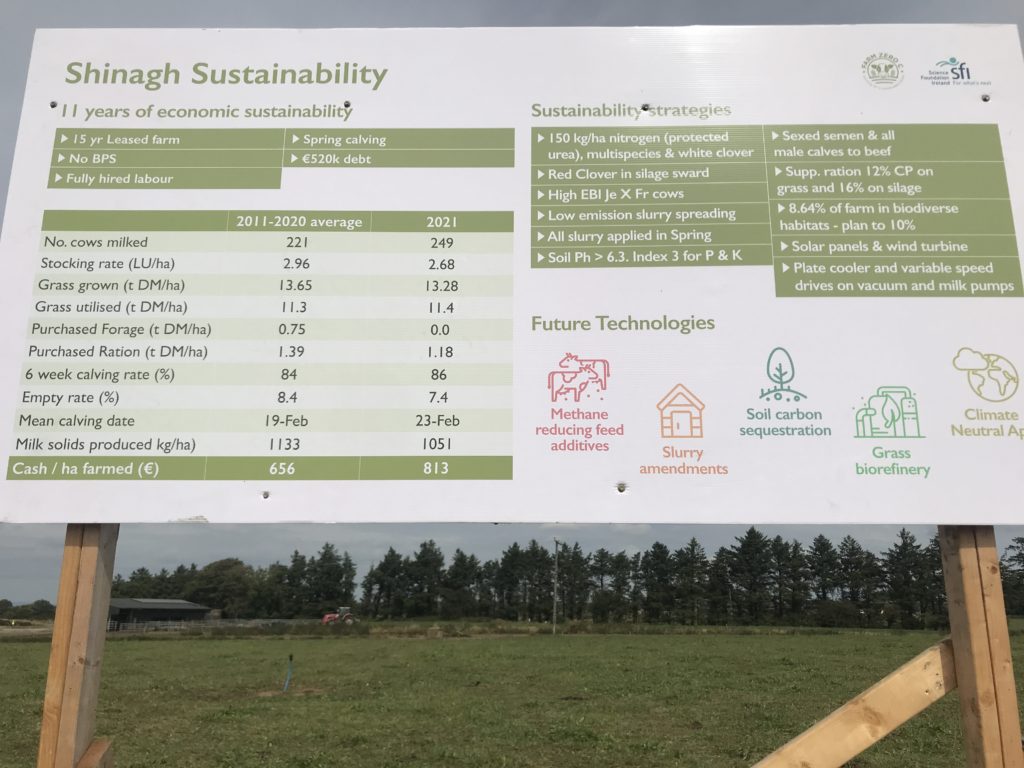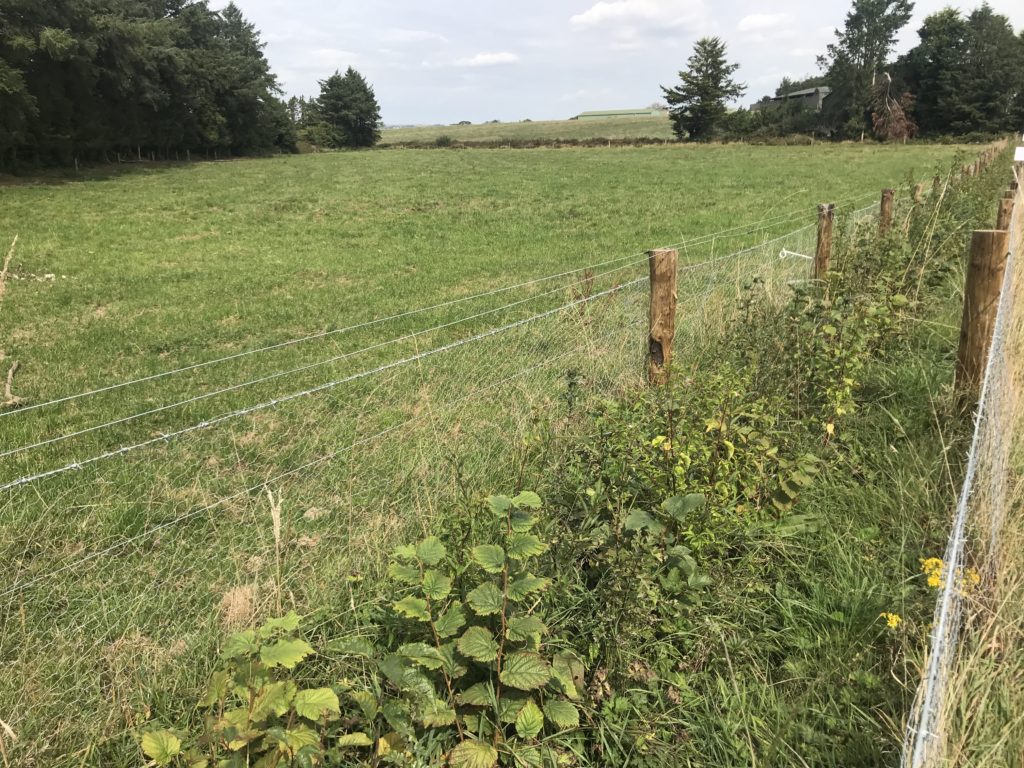Large crowds were present at Shinagh Estate on September 2, for an open day on the demonstration farm which is outside Bandon in Co. Cork.
The demonstration farm is aiming to be Ireland’s first carbon-neutral dairy farm and is operated in conjunction with Carbery; Teagasc; University College Dublin (UCD); Trinity College Dublin; Munster Technological University (MTU); Biorbic; Grassa; and Science Foundation Ireland.
On the farm, researchers are measuring carbon emissions and looking at ways of reducing them on farms.

Shinagh Estate
The farm was set up in 2011, with the original research looking at how converting land into dairying could be achieved while making a profit.
In more recent years however, the focus has been on emissions, with the aim of making the farm the first climate-neutral dairy farm in Ireland.
The farm’s carbon footprint in 2021 was 0.73kg of carbon dioxide equivalent (CO2e)/kg of fat and protein-corrected milk (CO2e/kgFPCM), which is down from 0.87kg CO2e/kgFPCM in 2018.
The old system saw the farm heavily stocked, with purchased-in feed needed each yearin the form of silage.

The addition of 17ha to the farm has meant that this is no longer required and all forage requirements are made on the farm.
This has lowered the overall farm stocking rate, but kept the milking platform the same at just under three cows/ha.
250 high economic breeding index (EBI) cows are milked on the farm, with current production at 16.3L/cow with 4.89% fat and 3.84% – which equals 1.46kg of milk solids.
Last year the herd sold 392kg of milk solids/cow, which was slightly down on previous years.

Clover
Grass is key to this system, with less than 400kg of concentrates fed/lactation to cows – and this is only fed when required, typically due to shortfalls in grass supply.
Clover has been incorporated into many of the farm’s swards, along with some multi-species swards.
Multi-species swards account for roughly 10% of grazing swards on the farm.
30% of the farm has good clover content, with chemical nitrogen (N) usage reduced on these swards.
The farm has reduced its chemical N used from 250kg of N/ha to 178kg of N/ha. The aim is to reduce this further to 150kg of N/ha.
A lot of this reduction has been achieved by making better use of slurry and the incorporation of white clover in grazing swards and red clover in silage swards.


Breeding
For the 2022 breeding season, only sexed dairy straws were used on the cows, with the remainder of the herd bred to beef artificial insemination (AI) or Angus stockbulls.
The herd had, and still does have, a large portion of Jersey genetics, with the farm using bulls with a high dairy-beef index (DBI) and commercial beef value (CBV) to increase calf quality.
It was noted that this was to ensure the farm’s social sustainability. It was important to ensure that beef calves coming from the herd had a good beef value..
Scanning has not taken place on the farm yet, but heat activity is low and around an 8% empty rate is expected.
In 2021, 86% of herd calved in the first six-weeks and the empty rate was 7.4%.

Biodiversity
The main aim of this demonstration farm is to create a ecomically sustainable dairy farm.
Increasing biodiversity on the farm is a big focus, with the farm aiming to have 10% of the farm classified as habitat.
In 2020, the farm had 7.5% classified as habitat, consisting of woodland and hedgerow. This has since been increased.
The farm achieved this by first focusing on non-farmed areas and creating habitats there, after which the least productive areas where targeted.

Wet land was created in a field that was too wet for machinery to travel. Previously, farmers would have lost some of their common agricultural policy (CAP) payment for this, but under the new CAP they will be rewarded for this.
Currently, 8.64% of farm counts as habitat, but some woodland has still to be added which will allow the farm to achieve its 10% target.
Shinagh believes that it is showing the way for farms to be economically viable, while maintaining production and also reducing carbon emissions.
